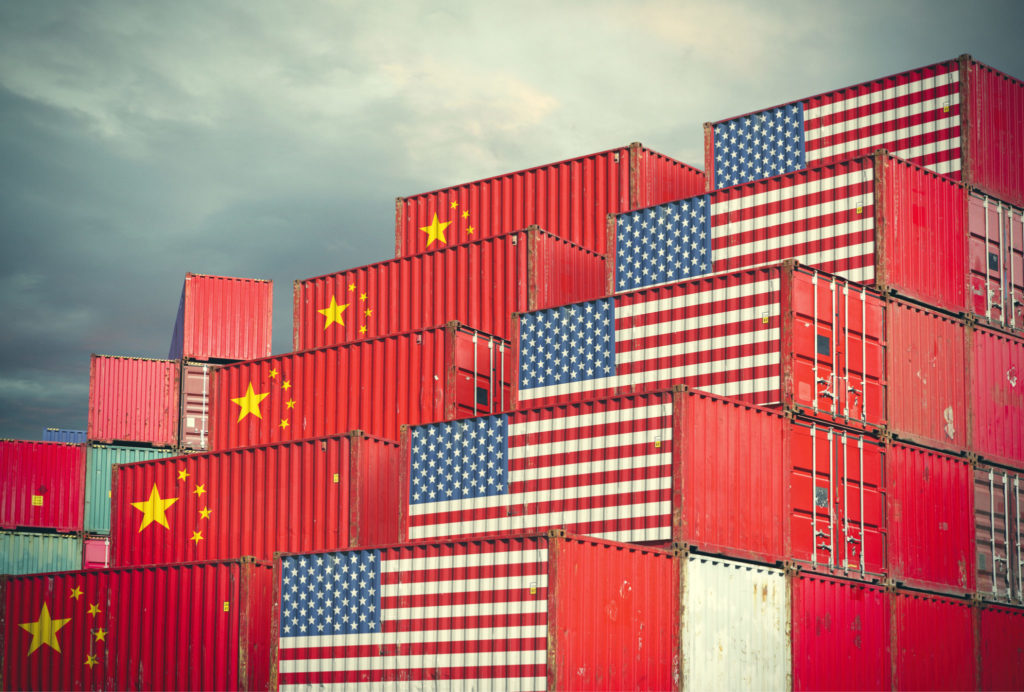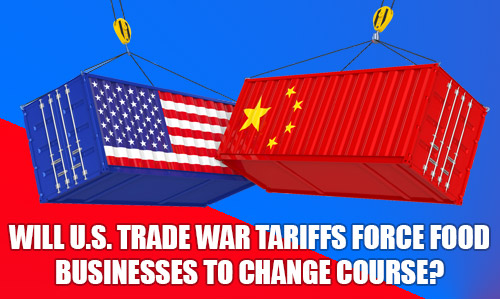A recent by-product of the U.S. trade war is theChina tariff list. The list includes all the food ingredients that will be slapped with the latest import duties. And that has supply-chain folk — from importers to manufacturers — gearing up for increased expenses on their imported food ingredients (from processed fish to dried egg yolks and sugar).
Without a doubt, the list of food items is long, and prices will increase. And as the tit-for-tat trade war continues, food industry businesses may need to consider new options and even change course…
Exploring different markets
U.S. soy farmers planted a lot more soybeans this year — more than corn. And yields are looking good. But the trade-wars have soybean farmers taking a different tack to get their product to market.
The Illinois Soybean Association has a plan — they are working “around” export tariffs, by rethinking their shipping. They’re using containerized shipping, allowing them to go after new markets in Asia-Pacific and European regions.
Additionally, the different shipping method steers soybeans toward a niche customer, who can benefit from greater flexibility with inventory size and availability.
Ultimately, rather than rely on China as their export artery, soybean farmers are exploring international ‘veins’ to move their product.
In a similar way, for U.S. food ingredient buyers and distributors, there may be an opportunity to pivot toward a newmarket — abroad or at home.
Satisfying new consumer tastes
Fish processing requires a lot of labor (for example, peeling and deveining shrimp). Because labor is cheap in China, theU.S. imports a lot of China’s processed fish.
But tariffs on the imported fish will make a can of pink salmon on the supermarket shelf or filleted cod on the restaurant menu a little less appealing for many consumers.
Of course, if demand goes down, people in the fish supply chain (family-owned fishing boats, suppliers and distributors) will suffer.

Does this create opportunity in the U.S.? Maybe. If imported fish becomes too expensive, then the higher U.S. labor costs may result in manageable product prices. Additionally, the consumer who “values” the product will buy it. Take millennials, for example…
Many food industry businesses are changing how they create and market their products to meet millennial buying preferences. After all, millennials want to know where their food comes from, and they want food transparency. So, if the salmon or cod is caught and processed in the U.S., consumers will feel more connected to the product, and they’ll buy it.
As prices escalate due to import tariffs, this puts food businesses in a position to shift focus toward a new type of buyer.
Changing direction amid trade wars and tariffs
As the trade wars and tariffs cause food prices to increase, food businesses will certainly feel the effects. But with well-planned strategic maneuvers, they’re bound to come out victorious.
Are your food products on the latestChina tariff list? (Access the list here.)What are your thoughts on changing course to compensate for the price increases? Let us know in the comments. At Ingredient Exchange, we help food industry customers offload their problem food ingredients. From expired whey powder to off-spec dextrose, we can turn your waste product into cash. Give us a call: 314-872-8850
